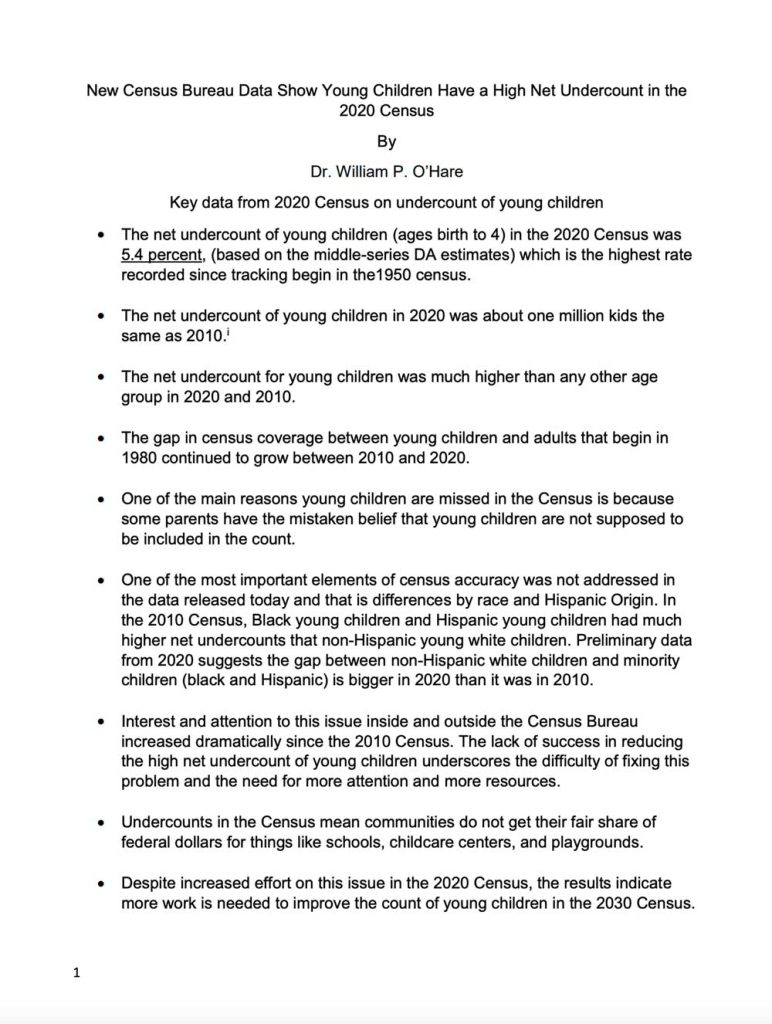On March 10, 2022, the U.S. Census Bureau released some of the primary metrics needed to evaluate the quality of the 2020 Census (U.S. Census Bureau 2022). Specifically, the Census Bureau released data from Post-Enumeration Survey (PES) and limited data from the 2020 Census that could be compared to the Demographic Analysis (DA) estimates released by the Census Bureau in December 2020 to assess census accuracy. This paper focuses on the accuracy of 2020 Census data for young children because they had the highest net undercount of any age group in the 2010 and 2020 Censuses.
Key data from 2020 Census on undercount of young children
- The net undercount of young children (ages birth to 4) in the 2020 Census was 5.4 percent, (based on the middle-series DA estimates) which is the highest rate recorded since tracking begin in the1950 census.
- The net undercount of young children in 2020 was about one million kids the same as 2010.[i]
- The net undercount for young children was much higher than any other age group in 2020 and 2010.
- The gap in census coverage between young children and adults that begin in 1980 continued to grow between 2010 and 2020.
- One of the main reasons young children are missed in the Census is because some parents have the mistaken belief that young children are not supposed to be included in the count.
- One of the most important elements of census accuracy was not addressed in the data released today and that is differences by race and Hispanic Origin. In the 2010 Census, Black young children and Hispanic young children had much higher net undercounts that non-Hispanic young white children. Preliminary data from 2020 suggests the gap between non-Hispanic white children and minority children (black and Hispanic) is bigger in 2020 than it was in 2010.
- Interest and attention to this issue inside and outside the Census Bureau increased dramatically since the 2010 Census. The lack of success in reducing the high net undercount of young children underscores the difficulty of fixing this problem and the need for more attention and more resources.
- Undercounts in the Census mean communities do not get their fair share of federal dollars for things like schools, childcare centers, and playgrounds.
- Despite increased effort on this issue in the 2020 Census, the results indicate more work is needed to improve the count of young children in the 2030 Census.
[i] The net undercount number is derived by multiplying the net undercount rates ( -0.54) time the number of children ages 0 to 4 (19, 458,000) from the middle series DA estimate









